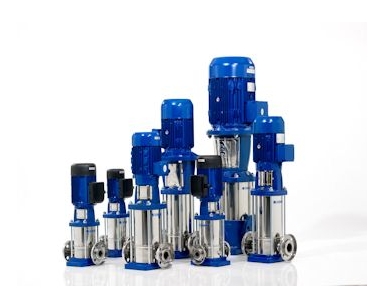
The European Commission Energy Efficiency Plan (EEP) aims to reduce the energy consumption of products which directly use or are related to the use of energy, from refrigerators and televisions to air conditioning units and more recently, pumps.
Since 2007, the EEP has continued to mark out key cut-off points for manufacturers to bring their products in line with the latest high efficiency standards and 2013 sees the introduction of the Minimum hydraulic Efficiency Index (MEI). Amedeo Valente, Engineering & R&D Director, EMEA for Xylem, explains how the MEI Index works and what installers can do to become compliant in time for the implementation of the new directive.
Over the past few years, the European Commission has developed a methodology to determine mandatory minimum efficiency levels for some electronic product groups sold within the European Union, known as uropean Minimum Energy Performance Standards (EU MEPS). That list of products now includes clean water pumps. Because 80% of a product energy efficiency is defined during its design stage, it is precisely this part of the production process that is targeted by the EU MEPS. Influencing the design of products sold in the EU is therefore crucial; hence the name of Eco-Design Directive for these new standards.
Whilst pumps were originally exempt from the Directive, they were later included when their full energy efficiency potential was identified as a major area of improvement for the domestic and commercial sectors. Pumps that now fall within the Eco-Design Directive are: End Suction Own Bearing pumps and End Suction Close Coupled pumps, Close Coupled in-line pumps, MultiStage Vertical pumps, and MultiStage Submersible pumps.
To ensure that any design changes made across the pumping industry can deliver maximum hydraulic efficiency standards, the European Commission conducted a regular evaluation of existing pumps on the open market to identify those which are not performing in line with the new criteria.
The Minimum Efficiency Index (MEI) identifies a minimum efficiency cut-off for those pumps performing under the new hydraulic efficiency levels.
The first cut-off point gets reinforced on the 1st of January 2013, while the second one, more stringent yet, will come into force on the same date in 2015. Products which have lower efficiency levels than the new requirements will not be eligible to carry a CE marking, making it illegal to place them on the open market anywhere within the European Union.
How does the MEI work?
The MEI outlines minimum efficiency levels which manufacturers must meet. For a specific pump design and size, the minimum efficiency is a value determined by the head, flow, speed and a constant that depends on the design of the pump being measured.
Many industries assume that if a product performs well at the point of maximum output then it can be deemed environmentally friendly. In reality though, a product should be designed to perform at its most energy efficient throughout its entire cycle and this is especially true for pumping equipment.
The minimum hydraulic efficiency must be calculated at three different points on the pump curve. Those manufacturers who succeed in meeting the minimum efficiency levels at all three points can achieve an overall high efficiency rating. The first point on the curve is the BEP which stands for Best Efficiency Point. This is the operating point at which the pump runs at maximum hydraulic efficiency. The second point is the art Load(PL) which is when the pump is operating at 75% of the flow at BEP. The final point is the ver Load (OL) which describes the point at which the pump is running at 110% of the flow at BEP.
In 2013, all pumps placed onto the open market in Europe, must perform at a minimum level of efficiency, calculated at the BEP, PL and OL operating points, in order to meet or exceed the MEI Index of 0,1. This index value, multiplied by 100, corresponds to the percentage of pumps currently in the market which do not meet the 2013 regulation MEI 0,1 therefore indicates that 10% of pumps available for purchase do not meet the standards set by the European Commission.
In 2015, the standards become more restrictive with the MEI requirement increasing to a rating of 0,4 meaning 40% of purchasable pumps today will fall below European standards.
Becoming compliant
Pumps placed onto the market by the manufacturer prior to the enforcement of the new European Directive can be sold by the distribution chain and put into service by the end user legally. Despite this flexibility, contractors and installers should be looking to bring their business practices in-line with the new laws as soon as possible in order to hit the ground running when the legislation becomes mandatory.
The easiest way to prevent being caught unprepared by the change in law is to start purchasing and installing compliant pumps straight away. To make the switch over as simple as possible for its customers, Xylem has ensured that all of its pumps affected by the legislation already meet the 0,1 MEI rating. Xylem customers therefore, can rest assured that the pumps they are purchasing meet the exacting requirements of the European Commission.





